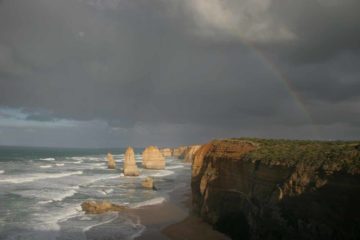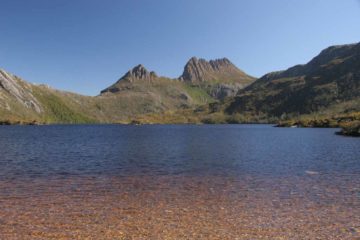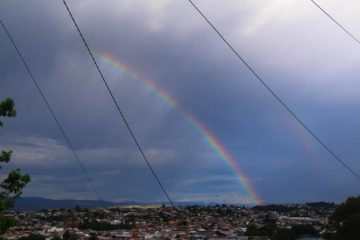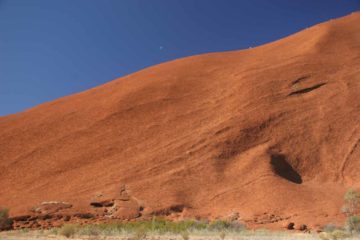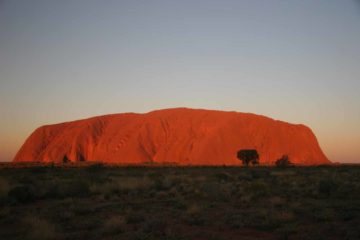About Triplet Falls
Triplet Falls far exceeded our expectations as Julie and I were becoming conditioned to think that just about all the waterfalls west of Melbourne would be dry or trickling during our drought-stricken November 2006 visit in the southeast of Australia. However, as you can see from the photo at the top of this page, the falls was flowing quite well, living up to its name as we could clearly see three segments running side-by-side amidst the lush and dense native growth. On a subsequent trip in November 2017, Young Creek actually had a little less water despite the area not being as affected by drought compared to that first visit. In any case, of the three columns of water, only the far right one yielded the most unobstructed views as the other two were somewhat covered by the foliage. We also needed a wide angle lens to try to capture all three falls in one shot.
Regarding the flow of the falls, we were in the midst of some wild Antarctic weather on our first visit. It was even raining during that first visit, which might have explained why it had better flow than it did on our second visit 11 years later. With the Otways having a reputation of being one of the rainier spots in Victoria (in fact, Young Creek was said to have been sourced by Weeaproinah, the wettest region of Victoria and most known for the Otway Fly Tree Top Walk), I believe that Young Creek and the Triplet Falls would tend to have pretty reliable flow with the difference being how many segments we’d be seeing.
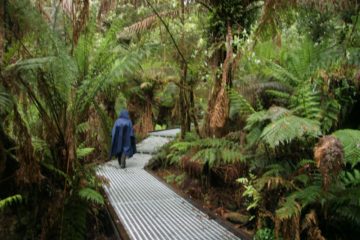
We didn’t pursue the Little Aire Falls in any of our visits to the Triplet Falls (as it would have extended the hike by another 90 minutes) so we continued along the forest floor as the track made its gradual loop before descending a few more series of steps revealing Young Creek. At around 1.2km from the start (another 200m beyond a misleading sign indicating a lookout with a view of the falls), we finally arrived at the actual lookout for the Triplet Falls. It was from here that we were able to get the views you see pictured at the top of this page.
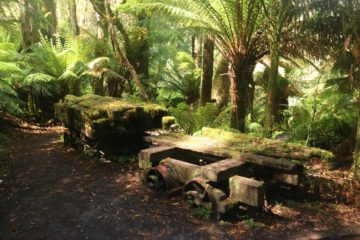
It was rumoured that the incident may have been a result of the ongoing battle between those in favor of preserving and expanding the native forests versus those who want to continue logging to sustain or produce income. Fortunately for us, the walk was re-opened by the time we arrived on our first visit in November 2006. In fact, in either of our experiences here, we couldn’t see any evidence of the chainsaw attack that caused the closure in the first place.
Nevertheless, such conflicts between profit and the health of our ecosystems point to an inherent dysfunction in our economic policies that create perverse financial incentives to pursue short term profits at the expense of long term sustainability. In this instance, by not properly pricing in the impacts or resulting clean-up of said economic activities, people are often at odds with themselves and each other making such a choice between money to sustain modern living whilst destroying the land that sustains them or forsaking profit opportunities based on principles only to have someone else seize such opportunities instead.
Beyond the relics, the track continued along metal bridges and tracks designed to minimize the impact of foot traffic on the fragile soil. Eventually after the remaining 500m, we regained the original start of the track to complete the loop walk.
Related Top 10 Lists
No Posts Found
Trip Planning Resources
Nearby Accommodations
This content is for members only. See Membership Options.Featured Images and Nearby Attractions
This content is for members only. See Membership Options.Visitor Comments:
Got something you'd like to share or say to keep the conversation going? Feel free to leave a comment below...No users have replied to the content on this page
Visitor Reviews of this Waterfall:
If you have a waterfall story or write-up that you'd like to share, feel free to click the button below and fill out the form...No users have submitted a write-up/review of this waterfall


